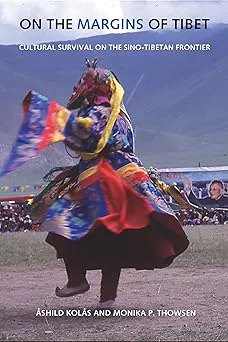Ashild Kolas, "On the Margins of Tibet: Cultural Survival on the Sino-Tibetan Frontier "
English | ISBN: 0295984813 | 2004 | 288 pages | EPUB | 3 MB
English | ISBN: 0295984813 | 2004 | 288 pages | EPUB | 3 MB
Open-access edition: DOI 10.6069/9780295804101
The state of Tibetan culture within contemporary China is a highly politicized topic on which reliable information is rare. But what is Tibetan culture and how should it be developed or preserved? The Chinese authorities and the Tibetans in exile present conflicting views on almost every aspect of Tibetan cultural life.
Ashild Kolas and Monika Thowsen have gathered an astounding array of data to quantify Tibetan cultural activities―involving Tibetan language, literature, visual arts, museums, performing arts, festivals, and religion. Their study is based on fieldwork and interviews conducted in the ethnic Tibetan areas surrounding the Tibetan Autonomous Region―parts of the Chinese provinces of Sichuan, Gansu, Yunnan, and Qinghai. Aware of the ambiguous nature of information collected in restricted circumstances, they make every effort to present a complete and unbiased picture of Tibetan communities living on China's western frontiers.
Kolas and Thowsen investigate the present conditions of Tibetan cultural life and cultural expression, providing a wealth of detailed information on topics such as the number of restored monasteries and nunneries and the number of monks, nuns, and tulkus (reincarnated lamas) affiliated with them; sources of funding for monastic reconstruction and financial support of clerics; types of religious ceremonies being practiced; the content of monastic and secular education; school attendance; educational curriculum and funding; the role of language in Tibetan schools; and Tibetan news and cultural media.
On the Margins of Tibet will be of interest to historians and social scientists studying modern China and Tibetan culture, and to the many others concerned about Tibet's place in the world.
Read more



